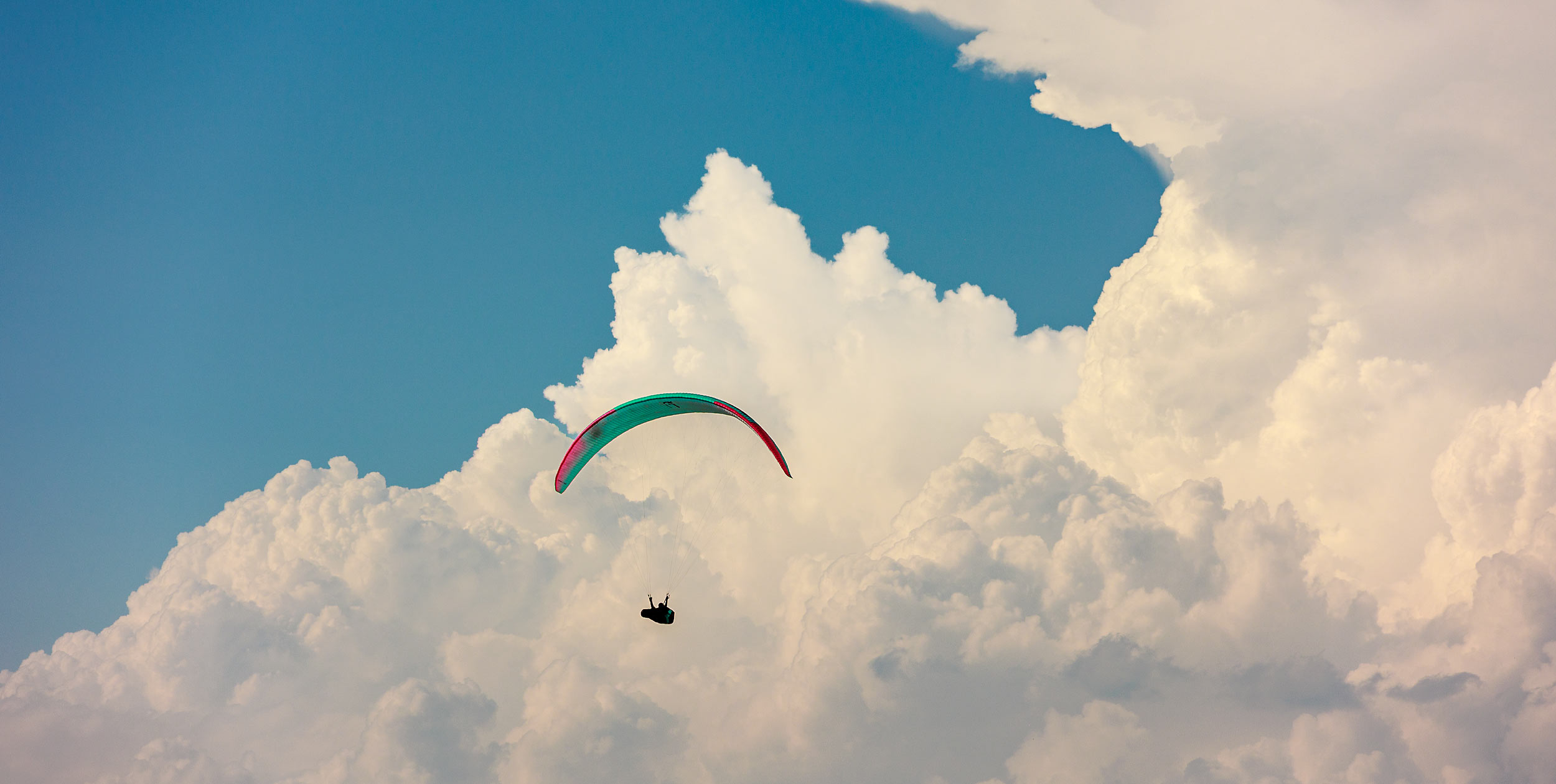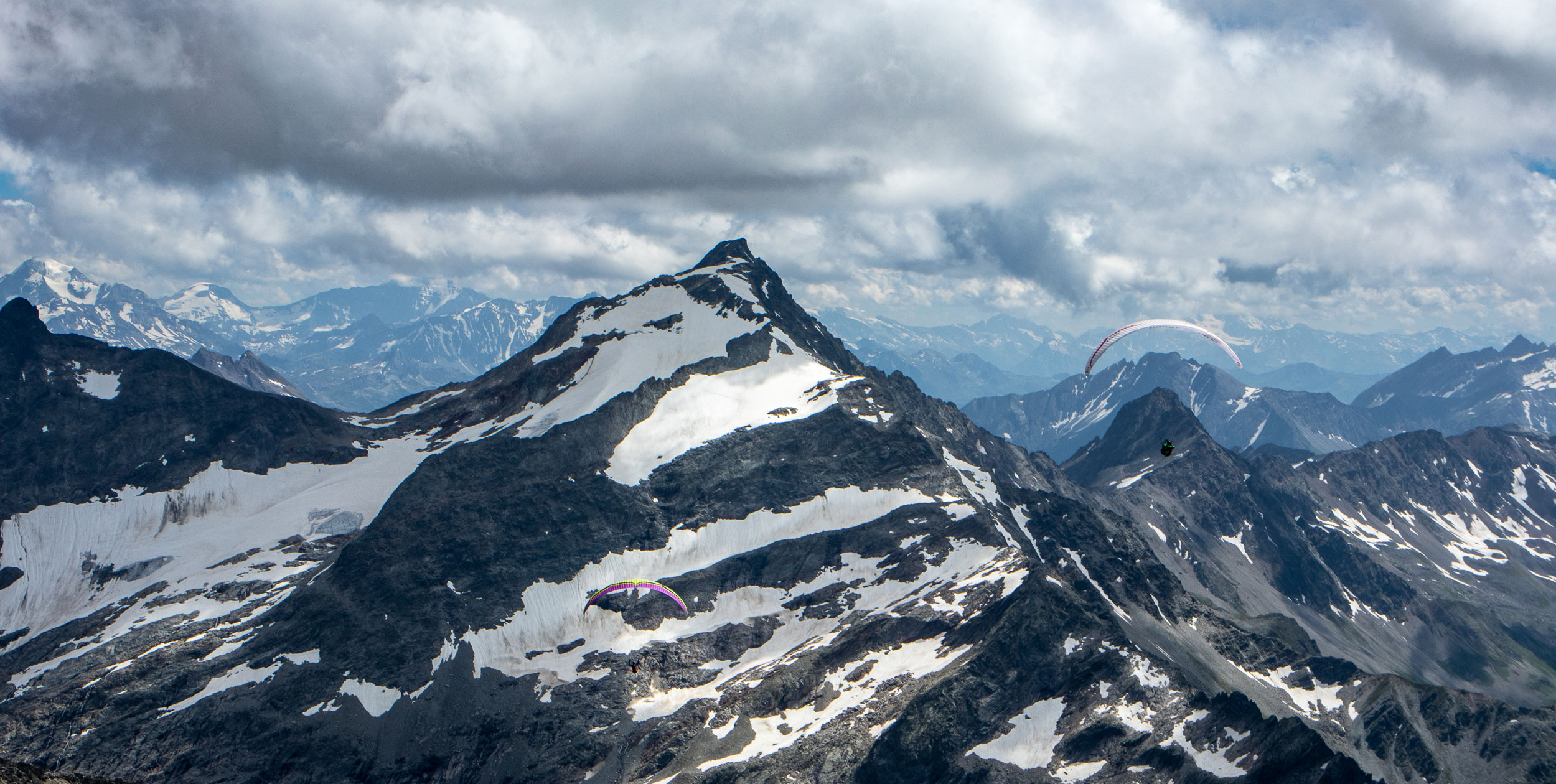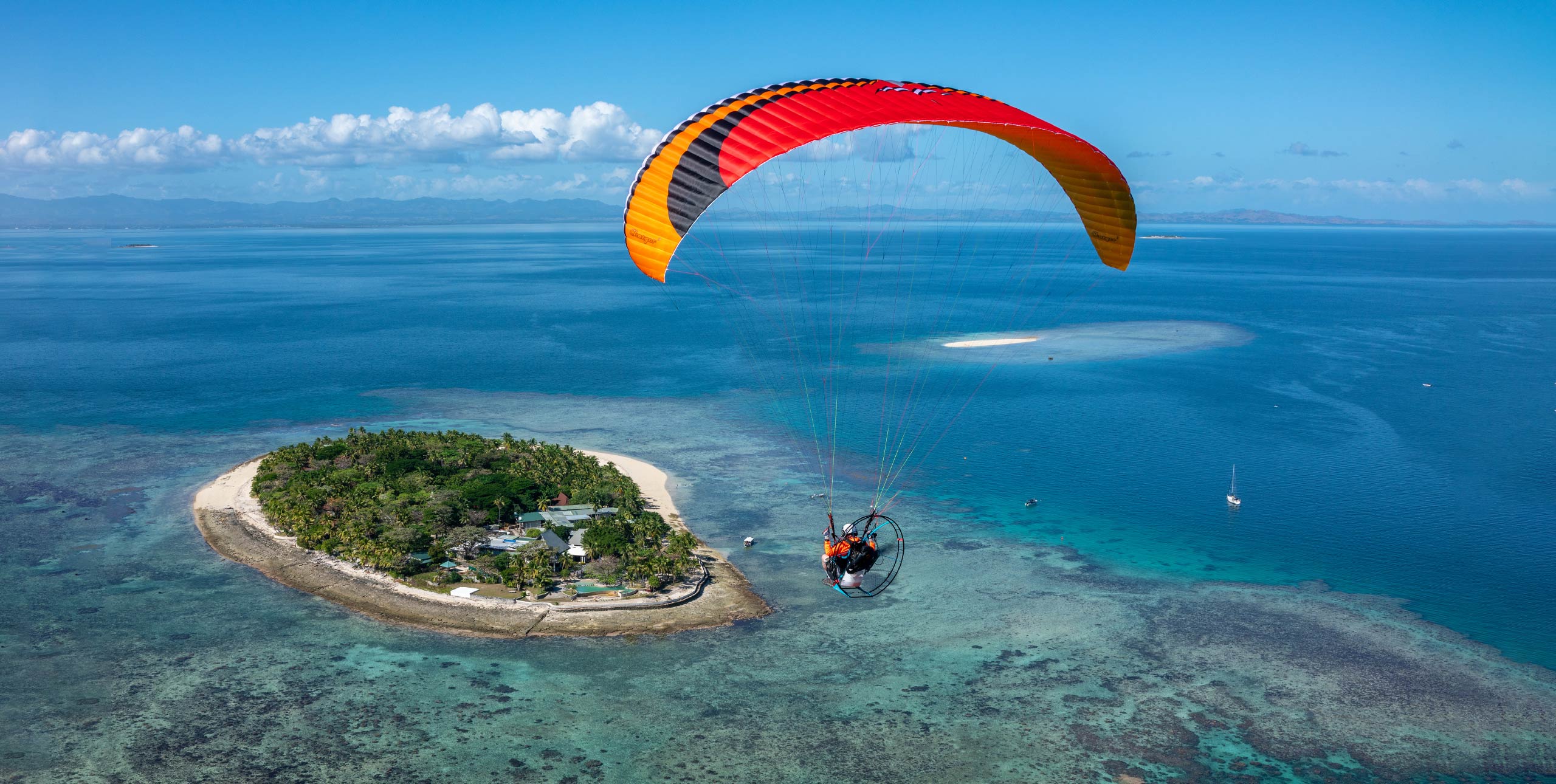
Flying techniques need to evolve as paraglider designs develop, and a quick pump on the brakes is becoming an increasingly important tool for advanced pilots. Pumping on the brakes is not a new thing, but has a bit of a shady past.
Top-landing
Originally, pumping the brakes (also known as flapping) was a questionable technique used to reduce performance for top landing. Pilots are often advised against it as the possibility of accidental stall made the technique a little risky. More experienced pilots continue to use it though, as it is effective. It is relatively easy to avoid the stall for good pilots and the technique remains useful.
SIV
More recently, pumps are used as a useful recovery technique during SIV. Deep brake is particularly useful for getting out cravats, and holding a lot of brake for a short period of time stops the full stall developing. In this situation it is an asymmetric pump that is used, with one hand only.
In my own SIV lectures I always stress the importance of using no brake or lots of brake during SIV. I tell pilots to avoid small brake deflections as this will keep a glider stalled and increase the shoot during stall recovery.
A pump on the brakes means you are going from hands-up to full-brake: both safe and effective positions to use in SIV. Because the brake is on only for a short period of time you avoid the problem of a developed full stall. SIV instructors are increasingly recommending this recovery technique during SIV courses.
[promobox]
Thermalling and turbulence
I have noticed this same technique being used increasingly for normal thermal flying, especially in strong conditions. The pilot flies hands-up and does a quick pump on one or even both of the brakes and returns to the hands-up position after about a second.
This can be useful to avoid getting a collapse or can be also used to control pitch. This is significantly different to what was being done before as this is only a short pump and the hands quickly return to hands-up position.
This technique is becoming more useful as increasingly the wing performs best close to trim speed, so the quicker you can return to trim speed the better performance you get out of the wing. Best glide is actually with a little accelerator applied, so this technique can also be used when the accelerator is on and has something in common with the way C-riser steering is done, but instead we are using similar techniques on the brakes.
For example, when you enter a strong thermal asymmetrically the thermal will try to throw you out. If you apply inside brake, which would be the usual thing to do, then you create more lift on the inside, which tends to throw you out of the thermal.
If instead you pump asymmetrically on the inside, then you create drag without making too much lift and so the pump is a more effective way of staying in the thermal than a traditional brake application.
Another way the asymmetric pump is used is to control pitch in a surge. It gives you the possibility to control the pitch as well as to induce a turn, which would not be possible with a simple brake application.
How it works
There are good reasons why pumping is so useful. A glider will stall easier the longer you hold the brakes in one position. This is a well-known phenomenon and is integrated into the EN test flight standards where brake range is an important consideration for glider safety.
During test flights for EN the brake range is defined as the position of the brakes that just stalls the wing when holding the brakes in this one position for five seconds. Less than five seconds and the glider will not stall; holding brakes more than five seconds will create a stall.
This means that you can pull more brake without stalling the wing if you only hold the brakes for a short period, like one second. This can increase the useable brake range by an amazing 10-20cm. This gives the pilot more control over the wing, allowing them to make stronger control movements without stalling.
The lessons
- Brake range is not a fixed value, as you might first think. It depends on the length of time the brakes are held down. Use this fact to your advantage in your flying during SIV.
- In thermal flying with high-performance wings the more you can fly hands up the better will be your performance. A single short pump on the brakes or C risers helps achieve this.
- Some gliders have more lift in the tips than other gliders and on such gliders the pump is an especially useful flying technique.
- Remember that not all gliders react in the same way to the pump action, you need to adjust your flying style to suit your wing. But the pump is another useful skill for the advanced pilot to use.
As always, make sure you explore new techniques in a safe environment, with sufficient height.
By Bruce Goldsmith, published in Cross Country magazine issue 209 (May 2020)











